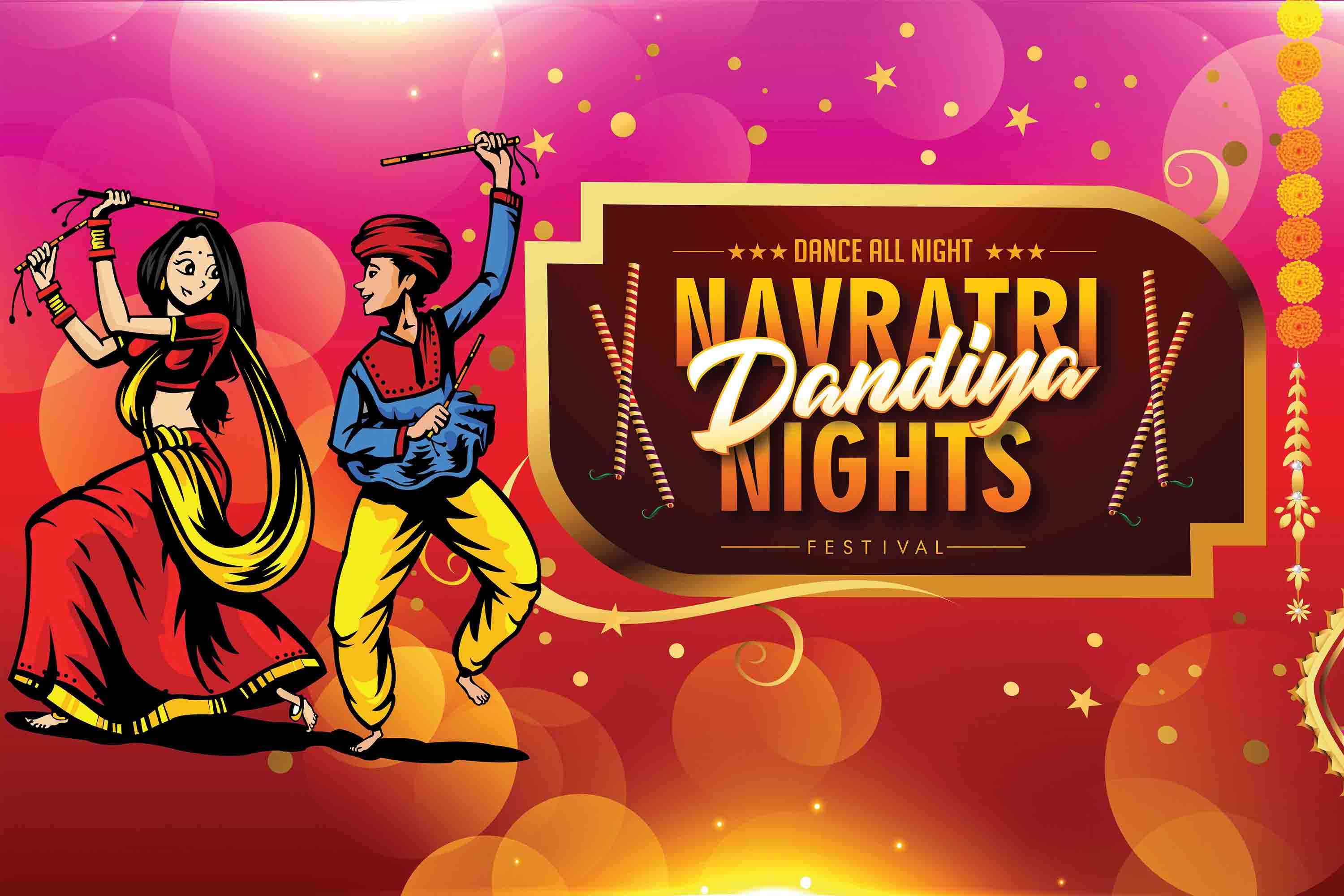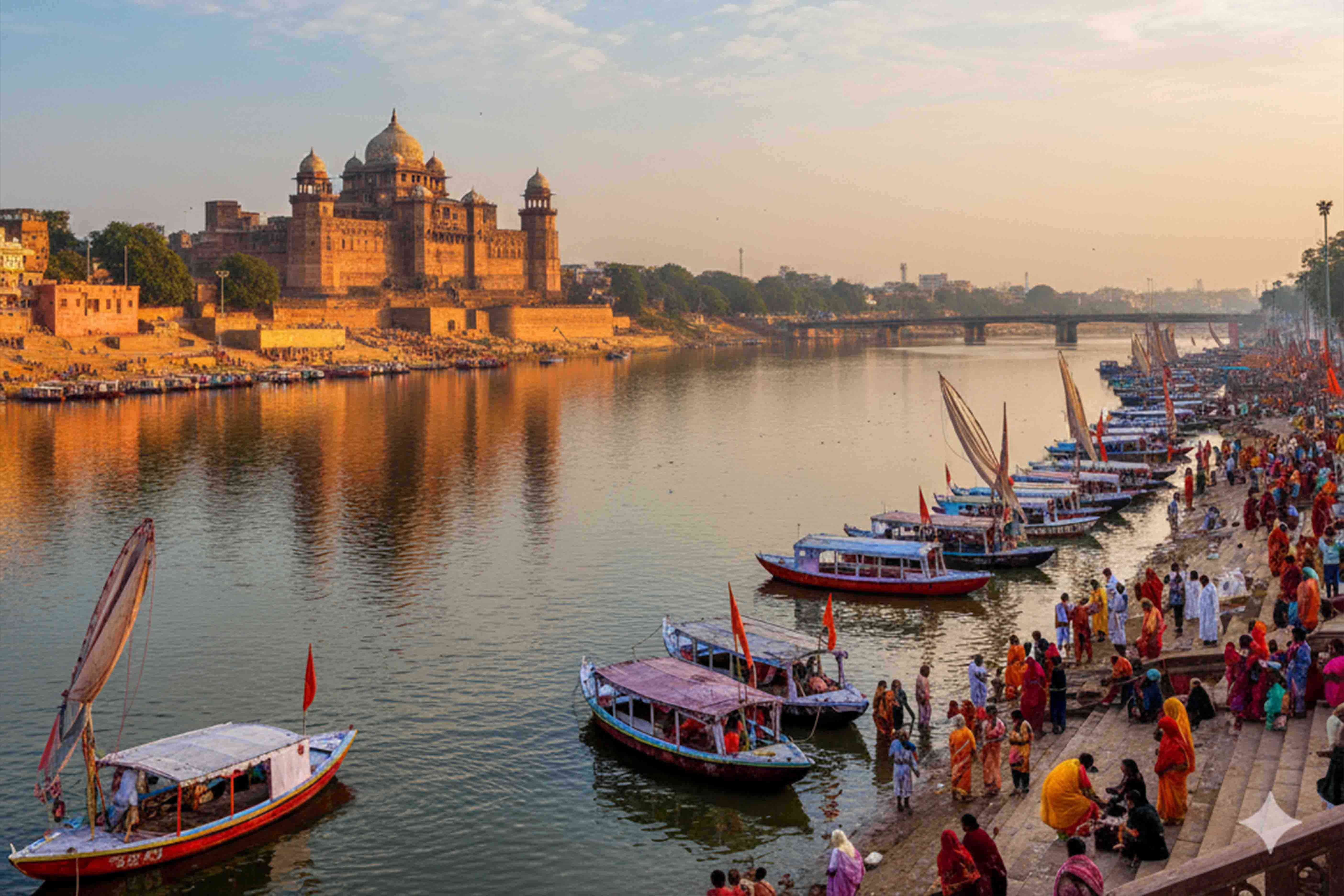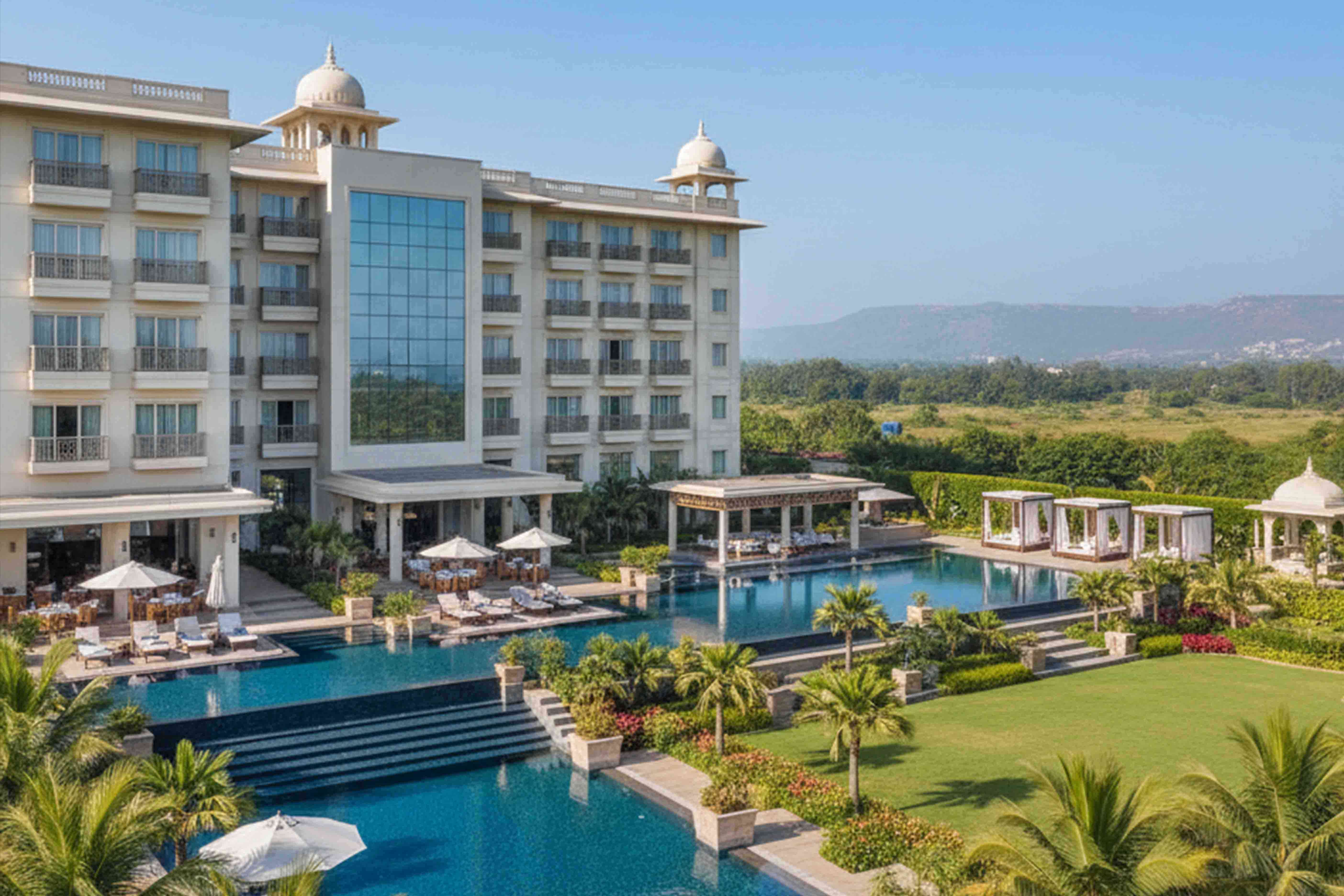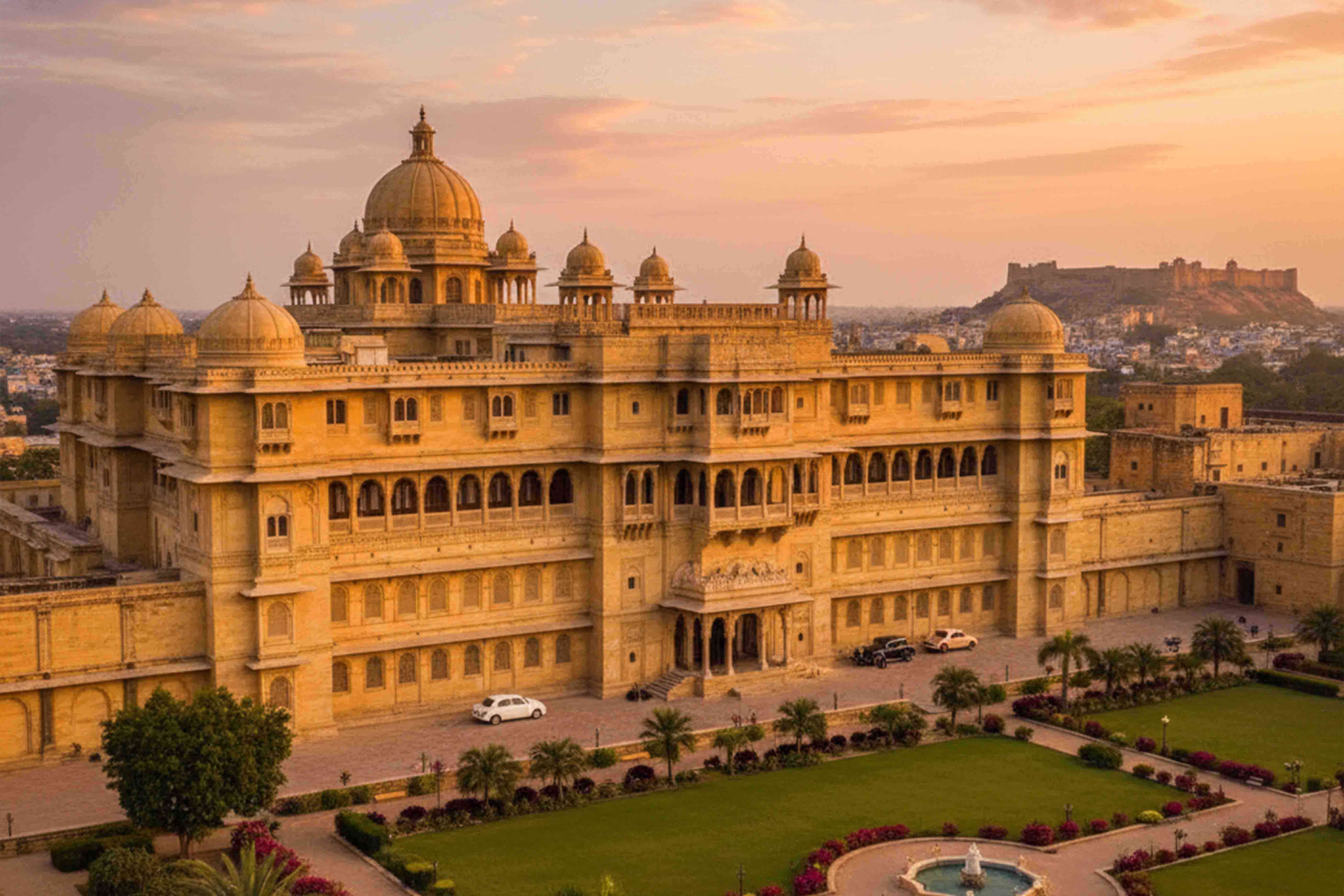 — the Festival of Lights on the Ghats of Varanasi_1760002380.jpg)
Dev Deepawali (Dev Diwali) — the Festival of Lights on the Ghats of Varanasi
- City Varanasi
- October 09, 2025
- 233 views
Dev Deepawali (often written Dev Diwali) is the celebration of Kartik Purnima in Varanasi — literally the “Festival of Lights of the Gods.” According to local belief, on this full-moon night the gods descend to the ghats of the Ganga to bathe and offer their prayers; the ghats are lit with thousands (historically called “a million”) of earthen lamps (diyas) in their honor. The evening also includes elaborate Ganga aarti ceremonies, devotional music, floating lamps on the river and cultural programs across the city. The event traditionally concludes the five-day Ganga Mahotsav cultural programme that runs in the lead-up to Kartik Purnima.
When is it (concrete date for 2025)
Dev Deepawali falls on Kartik Purnima (the full moon of Kartika). In 2025, Kartik Purnima / Dev Deepawali is observed on 5 November 2025. (When you plan, always check the lunar calendar as the festival date shifts year to year.)
Where it happens — the festival area & key ghats/events
Dev Deepawali is a city-wide spectacle with focus along the entire Varanasi riverfront. Important places and what to expect there:
- Dashashwamedh Ghat — the showpiece Ganga aarti and major lighting displays; often the busiest and most dramatic.
- Panchganga, Manikarnika, Assi, Tulsi, Rajghat — all the ghats between the southern and northern ends are lit and host smaller ceremonies, cultural programs and deepdan (offering of lamps to the river).
- Rajghat / Ganga Mahotsav venues — cultural stages, craft melas and music concerts are usually scheduled during Ganga Mahotsav (the 4–5 days before Kartik Purnima).
- River itself (boat vantage points) — for a full immersive view, boats on the Ganga give the best panoramic views of the ghats glittering with lamps. Official/organised boat lanes and barricaded spectator zones are often used to manage crowds.
How the evening unfolds — rituals & highlights
- Early evening (pre-sunset): ghats fill with volunteers lighting rows of earthen lamps; craft fairs and cultural programs run nearby.
- Sunset to night: mass lighting of diyas, Ganga aarti(s) begin (Dashashwamedh has a marquee aarti), bhajans and patriotic tributes at selected ghats, and large numbers of diyas are set afloat.
- Special events: many years have included a last-post/wreath ceremonies honoring martyrs at Amar Jawan Jyoti, laser/light shows, and large-scale cultural programming as part of Ganga Mahotsav. City authorities co-ordinate lighting, security and medical services for the crowds.
Boat rides — booking, types & price ranges (practical details)
Boat rides are the most sought-after way to experience Dev Deepawali. There are sharing boats (small non-motorised, motor boats) and private motorboats or larger pontoons for groups.
- How to book: many local operators accept online reservations (search for “Dev Diwali boat booking Varanasi”), or you can reserve through travel agents/tour operators based in Varanasi. Official tourist portals and reputable operators list sharing and private options. Book early (see “When to book” below).
- Typical price ranges (indicative — check operator for exact rates): sharing motor boats often start in the low thousands of INR per person, sharing/seat boat packages can be ≈ ₹3,000–₹10,000 per person depending on service and year; private motorboats / exclusive boats for small groups can range from tens of thousands onward (private group rates often listed around ₹45,000+ as example packages). Prices vary widely with demand, boat type and operator. Booked boats frequently include a timed pickup and may limit river positioning for safety and crowd control.
Accommodation & bookings — advice and timing
- Book weeks/months in advance. Dev Deepawali draws large domestic tourist numbers; hotels near the ghats (Dashashwamedh/Assi/Kashi Vishwanath area) sell out early. Travel guides and festival sites recommend booking 4–6 weeks or more ahead to secure reasonable rates and locations.
- Where to stay: if you want walking access to ghats, choose accommodation near Dashashwamedh, Assi or Cantonment; for quieter stays with good connectivity, areas near the railway station or Lanka may be more relaxed. Newer ghats (e.g., Namo Ghat) have facilities and sometimes less congestion.
- If you miss central hotels: look for guesthouses/BnBs across the city and book a boat pickup zone in advance — it’s feasible but expect more commute time and crowded transport.
Travel logistics — getting to Varanasi & local movement
- By air: Lal Bahadur Shastri Airport (Varanasi) is the nearest. Pre-book taxis from airport to hotel — travel time depends on ghats chosen and festival traffic.
- By train: Varanasi Junction (BSB) and Kashi Vishwanath (newer station) are the main rail options — book trains early.
- Local transport on festival day: expect road closures and barricading near riverfront; the city deploys extra police, NDRF, water police and medical teams — plan to walk between ghats rather than rely on cars for short hops.
Safety, crowds & practical tips
- Crowds: Dev Deepawali attracts hundreds of thousands of visitors. Expect dense crowds on the main ghats; allow extra time and avoid carrying large bags.
- Boat safety: choose licensed operators, confirm life jackets are provided and have a clear pickup/drop plan. Follow crew instructions and avoid leaning out of boats for photos.
- Health & emergency: city authorities typically deploy medical teams and ambulances; keep emergency numbers and hotel address handy.
- Respect rituals & environment: use only permitted lamps/eco-friendly materials where possible; do not throw plastics in the river and follow local guidance on offerings. Authorities increasingly promote eco-friendly lamp materials and controlled usage.
Photography & best viewing strategy
- Best viewpoint: a boat near the mid-river opposite Dashashwamedh or Panchganga gives sweeping views. Walking the ghats from Manikarnika → Dashashwamedh → Rajghat lets you experience preparations and changing light.
- Golden hour & night shots: arrive pre-sunset for golden hour, then stay after dark for the lamp spectacle; use a small tripod/steady grip for low-light shots (but be mindful of crowds).
- Drones: largely prohibited in crowded festival zones; check local permissions (airspace around major events is often restricted).
Cost checklist — what to budget for (ballpark)
- Boat (sharing) per person: ₹3,000–₹10,000 (varies widely).
- Private boat for small group: ₹45,000+ (depending on operator & demand).
- Hotel (festival premium): expect surge pricing; central hotels may be 1.5–3× normal rates unless booked early.
- Local food/entry fees for cultural shows: variable. Always confirm latest operator prices when booking.
Eco & cultural responsibility
- Many organizers and the municipal authorities are encouraging eco-friendly lamps and controlled offerings to reduce pollution of the Ganga. Respect guidelines, avoid plastics and follow instructions from volunteers and officials.
Quick planning checklist (one-page)
- Decide whether you want on-shore or boat experience.
- Book hotel & boat at least 4–6 weeks ahead.
- Carry ID, minimal cash, power bank, small first-aid, and water bottle.
- Wear comfortable shoes (lots of walking), layer for cooler November evenings.
- Confirm pickup points and emergency contacts with your operator.
Final note — make it a respectful visit
Dev Deepawali is not only a photographer’s dream but a living religious event for thousands of devotees. Plan early, choose reputable operators, follow local rules, and contribute to an eco-friendly celebration — that way you’ll experience one of India’s most dramatic festivals safely and respectfully. For boat bookings and operator options search for established Varanasi tour operators and the official Kashi/UP tourism pages — and always cross-check prices and terms before paying.







